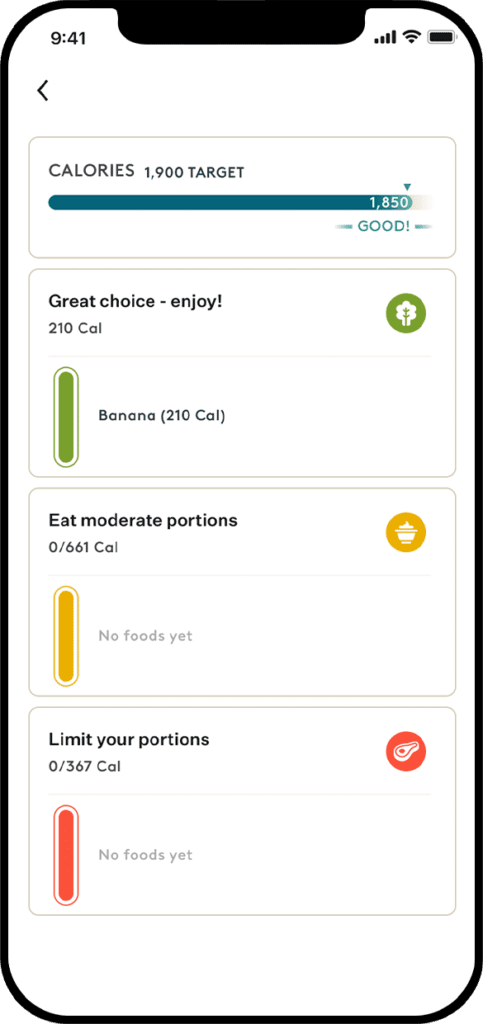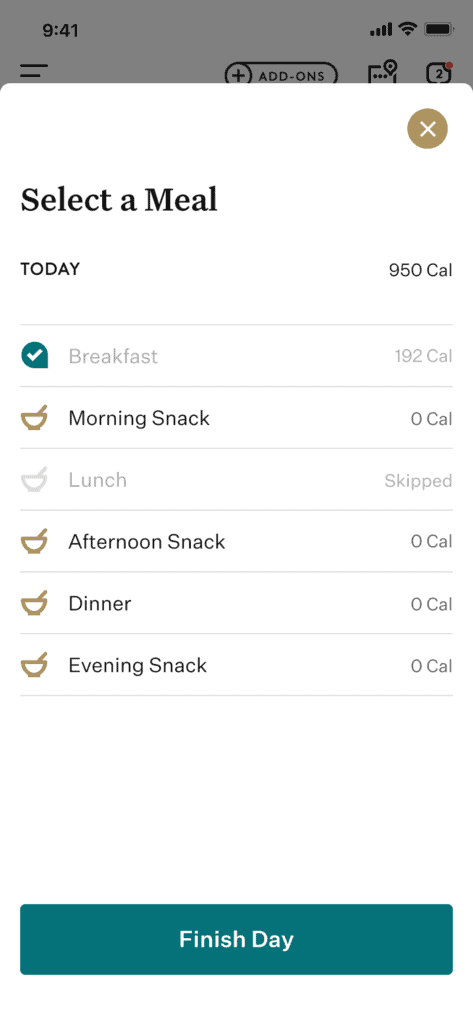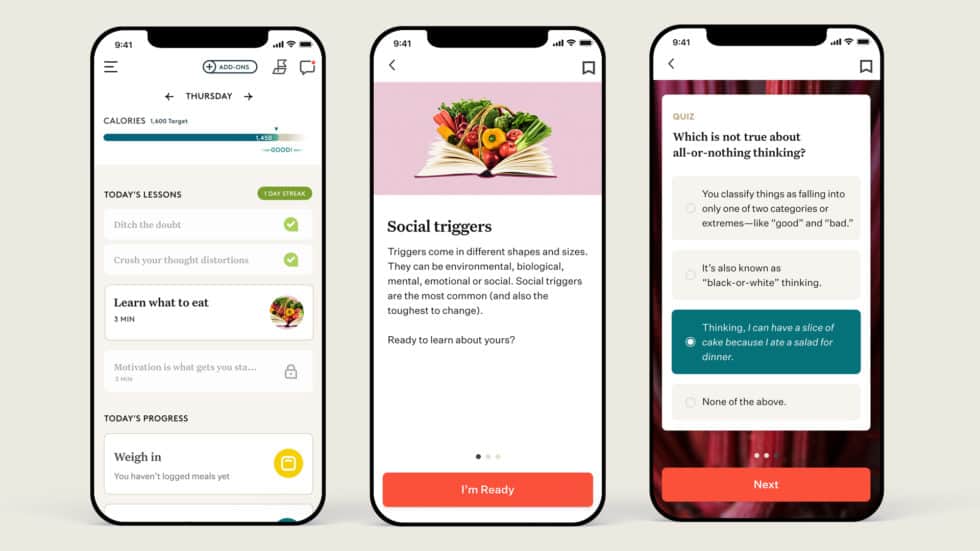- Noom Weight’s customizable program fits with all sorts of intermittent fasting styles, including the 16/8 and 5:2 methods.
- From managing cravings to staying hydrated, Noom can help you overcome common challenges associated with intermittent fasting.
- Noom’s three-colored food system teaches you what to eat during non-fasting periods.
If you’re currently on an intermittent fast or are considering starting one, you might be wondering if you can fit intermittent fasting into the Noom Weight program.
The answer is yes, you can.
Noom Weight complements many intermittent fasting programs.
Plus, it can help you overcome common challenges associated with intermittent fasting for sustained weight loss success.
Note: Before embarking on an intermittent fast, you should consult your healthcare provider.
This is Chapter 5 of Noom's Guide to Intermittent Fasting:
- Empowering Your Wellness Journey: Exciting Updates to Noom
- The Noom Kitchen Cookbook: Healthy Living Secrets
- Intermittent fasting: The complete guide for beginners
- What to eat and drink during intermittent fasting: A complete guide + FAQs
- Intermittent fasting for weight loss
- Intermittent fasting for women: Expert answers to your top questions
- Does Noom work with intermittent fasting?
Why use Noom if you’re already intermittent fasting?
These days, more people than ever are practicing intermittent fasting thanks to its many health benefits, including weight loss.
But it’s not necessarily easy to stick with.
Intermittent fasters face unique challenges, such as:
- Heightened food cravings
- Dehydration
- Making sure a balanced, nutritious diet is consumed
All of which make intermittent fasting tough to stick with long term.
Let’s look at how Noom Weight’s color-coded food system, daily lessons, and 1:1 coaching can help you deal with these obstacles and develop new, sustainable habits.
Common intermittent fasting struggles and how Noom Weight helps
Understanding what foods to eat during your eating window
While intermittent fasting has many benefits, it doesn’t help you understand exactly what and how much you should eat during your eating window.
This is vital information to make sure you’re consuming a nutritious, balanced diet during those precious hours.
Our color-coded system shows you how to do that.
With Noom, all foods are categorized as green, yellow, and orange based on caloric density (CD).
- Green foods have the least number of calories and/or the highest concentration of healthy nutrients. Think: veggies, fruits, and whole grains.
- Yellow foods have more calories and/or a medium amount of healthy nutrients. Think: lean proteins, low-fat dairy, avocados, and beans.
- Orange foods have the most calories and/or the least nutrients. Think: red meats, desserts, sodas, and processed foods.

This color system teaches you how to choose foods that are both satisfying and nutritionally rewarding during non-fasting periods.
And it leaves space for those foods you love (hello, pepperoni pizza).
You’ll track everything you eat in the Noom Weight’s food logger, which is quick and easy.
Also, research shows that tracking what you eat makes it more likely you’ll reach your target weight.
With Noom’s system, you’ll build greater awareness of what you’re eating. And many Noomers report that making smarter eating choices becomes second nature to them.
Eating too much (or too little) in your eating window
It can be tough to avoid overeating during your eating window.
Feeling famished after fasting, you might be tempted to reach for potato chips or your favorite ice cream.
On the flip side, you don’t want to eat too little during non-fasting periods. You still need a balanced diet for your overall health and well-being.
Noom Weight helps you avoid overeating or undereating.
We calculate your daily calorie range based on your age, current weight, and other factors.
Then you log what you eat in the Noom Weight app.
By tracking everything you eat in the food logger (again, it only takes a moment to do so), you see how your choices fit into your calorie budget for that day.

Take the 16:8 fasting method.
Imagine you’re coming out of a 16-hour period of fasting. You’ve been fantasizing about egg rolls and General Tso’s chicken.
Then you check Noom’s food logger and realize that meal will blow your entire calorie budget for the day.
All your hard work spent fasting could be undone by one high-fat, carb-heavy meal.
So, you look at some alternatives in your Noom food logger and opt for some equally satisfying, lower-calorie options like steamed dumplings and chicken and broccoli stir fry.
Overcoming temptations and triggers while fasting
At Noom Weight, we focus on more than just what you eat.
After all, weight loss is about so much more than calories in versus calories out.
You’ll explore your habits and triggers around eating—which can also undermine any gains made by intermittent fasting.
While our Daily Lessons are brief (just 5–15 minutes a day), they’re impactful.

Take stress eating.
Fasting, by its nature, causes increased levels of the “stress hormone” cortisol, which can make you feel stressed and crave high-calorie comfort foods.
Noom has lessons to help you overcome stress eating and find alternatives to food when you’re tempted to break your fast.
You’ll recognize when you’re reaching for those potato chips because you’re feeling stressed or bored.
And we’ll teach you alternative strategies to incorporate during fasting, like meditation, journaling, or taking a walk.
Plus, you can opt to connect with a 1:1 coach for support.
Trained in key nutrition, wellness and psychology concepts, our coaches can help you tailor the Noom Weight program to whatever plan you’re following.
Noom Weight coaches are open and supportive when it comes to intermittent fasting and how it works for you, whether it’s your first time fasting or you’re a seasoned pro.
And if you hit a weight loss plateau—which is common even for intermittent fasters—your coach has your back.
They might suggest tweaks, like incorporating more green and yellow foods during non-fasting periods.
Not drinking enough water
Not drinking enough water is a common intermittent fasting mistake.
And it’s easy to understand why.
When you’re fasting, you’re focusing on not consuming food and beverages, so you might forget about water.
But staying hydrated is vital to maintaining your health. Your body literally depends on it.
Noom Weight helps you track your water intake with the app’s water tracker.
Set a daily “win with water” goal and track the number of glasses you drink. The tracker is a simple way to remind yourself to keep sipping all day long.
You’ll find a lot more that you’ll find in the Noom Weight app, too. It has tracking tools for daily steps, exercise, and more.
There’s also a recipe database with over 1,000 recipes that you can use to plan meals ahead for non-fasting periods.
The recipe tracker also automatically logs the total calories per serving (rather than you manually logging each ingredient).
Get started with Noom for intermittent fasting
If you’re already on an intermittent fast—or want to start one—Noom Weight can empower you with psychology-backed tips and resources. So you can focus your efforts on building sustainable, healthy habits.
Why you can trust us
At Noom, we’re committed to providing health information that’s grounded in reliable science and expert review. Our content is created with the support of qualified professionals and based on well-established research from trusted medical and scientific organizations. Learn more about the experts behind our content on our Health Expert Team page.



 Noom Team
Noom Team

 Meaghan Cameron
Meaghan Cameron


 Shoshana Fishbein
Shoshana Fishbein